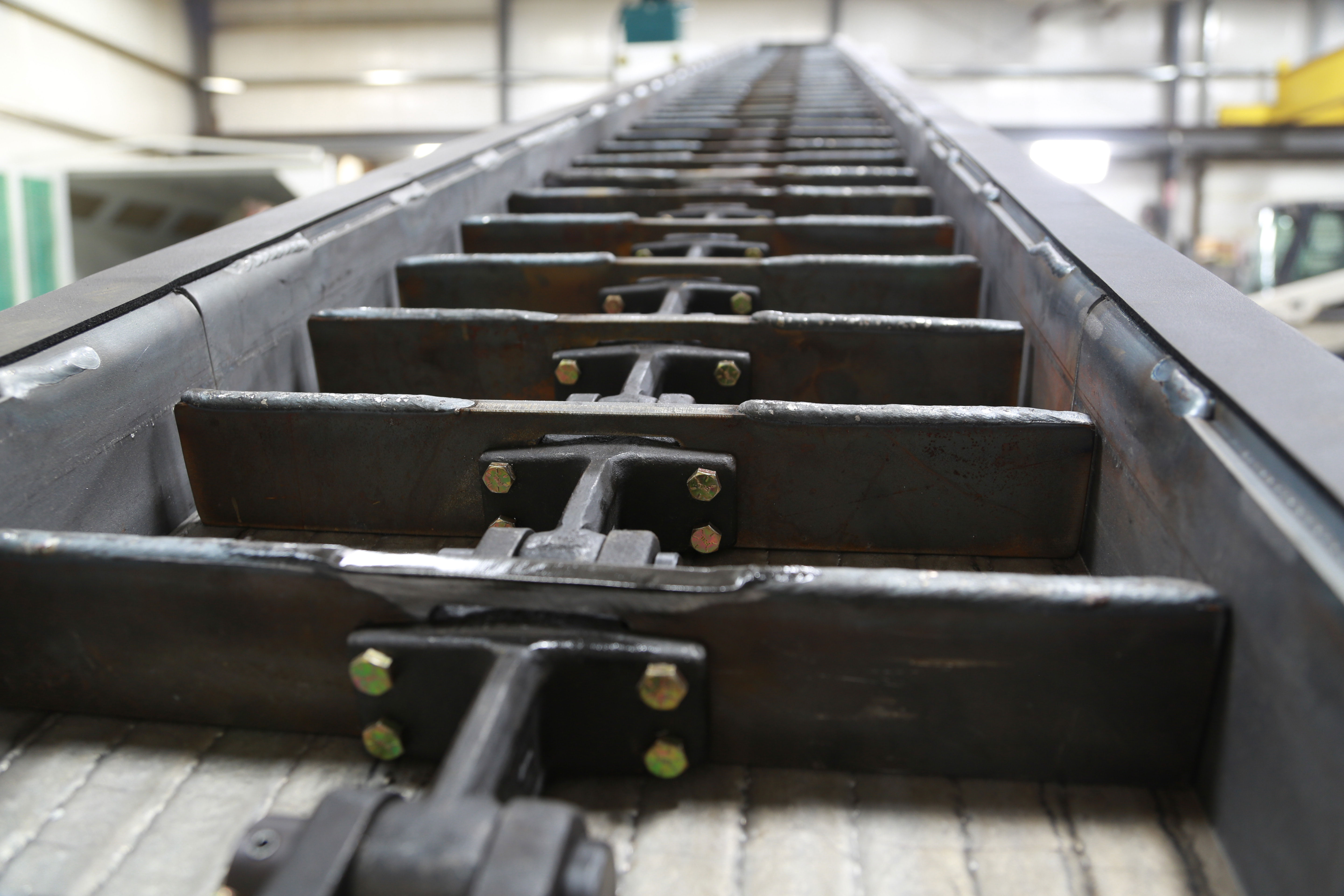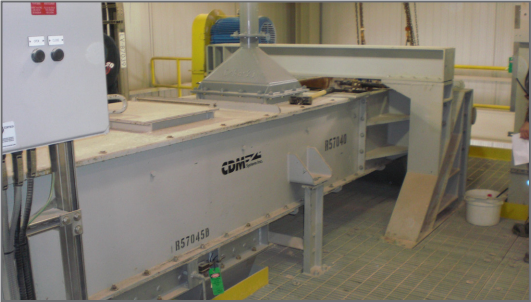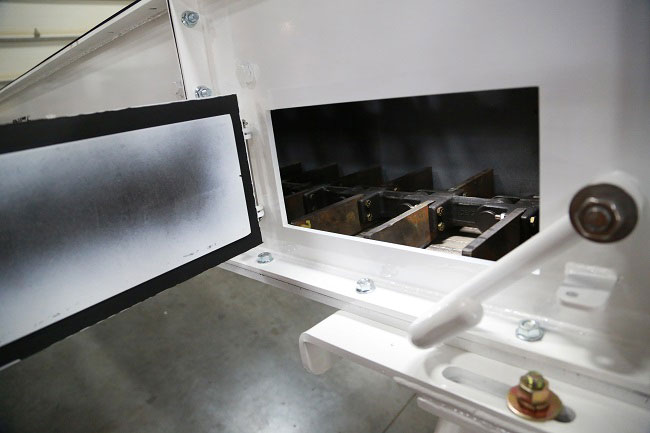Glass Cullet
Fiberglass Manufacturer Reduces Maintenance Cost and Improves Operating Conditions with Drag Chain Conveyors
Download PDF
CHALLENGE
A global fiberglass insulation manufacturer sought an improved method for handling glass cullet and batch. The screw and belt conveyors used in all of the North American plants to move glass and bulk material were causing excessive maintenance and housekeeping issues and the unplanned downtime was causing loss of production.
PRODUCTS UTILIZED
Drop-Forged Chain
Drag Chain Conveyor
En-Masse Conveyor
Belt conveyors were used when material had to be moved greater than 30’. The operating method of the belt conveyors required ancillary equipment to control the feed rate to downstream equipment so the material could be processed according to output specifications. The open frame of the belts required the manufacturer to install dust control systems to maintain the health and safety of employees and comply with environmental requirements.
A typical belt conveyor can only effectively use 20% of available space to move bulk material. This means when compared with more efficient types of conveyor options, a belt conveyor will require more physical space with greater horsepower requirements. From an operating standpoint this increases maintenance and energy costs. In addition, belt rollers and bearings required frequent maintenance and repair.
The Fiberglass Manufacturer used Screw Conveyors in applications that required shorter distance material movement and where hanger bearings were not required. The highly abrasive nature of the material required that the screw, flighting, shafts, and troughs have full coverage chromium carbide hard facing. This hard facing made the screws conveyors extremely costly and still only provided 18 to 24 month service in the applications.
The operating method of a screw conveyor continually tumbles and agitates the material which caused excessive wear on the screws and trough; even with the addition of full coverage chromium carbide.
Rising Maintenance Costs Drive the Need for Change
 When one of the aging screw conveyors for the plant was due for replacement, the Fiberglass Manufacturer made the decision to try a different method of conveyance. Seeking experience with glass cullet material movement, the plant manager called CDM. Upon review of the application, installation location, and material CDM proposed a reinforced Drag Chain Conveyor to replace the screw conveyor.
When one of the aging screw conveyors for the plant was due for replacement, the Fiberglass Manufacturer made the decision to try a different method of conveyance. Seeking experience with glass cullet material movement, the plant manager called CDM. Upon review of the application, installation location, and material CDM proposed a reinforced Drag Chain Conveyor to replace the screw conveyor.
Plant staff was skeptical of the use of a Drag Chain Conveyor for the application for the following reasons:
- Application location. The conveyor needed minimal clearance between the inlet of the conveyor and the terminal shaft due to existing structural steel and a large bin.
- The conveyor was required to meter the product feed / flow rate from the bin without flooding the conveyor.
- The product had to be elevated at an approximate 30° incline.
- The course cullet was difficult to handle and batch. Conveyance was important to feed the downstream melter.
The team at the plant was also skeptical of the much lower initial cost of the Drag Chain. Much of the cost reduction came from the only partial construction using chromium carbide and significantly less horsepower.
 CDM engineered the Drag Chain Conveyor to meter the flow from the bin while also providing minimal conveyor extension beyond the inlet due to the structural limitations. The terminal station was provided with a CDM self-cleaning tail which would prevent potential flooding or material build-up.
CDM engineered the Drag Chain Conveyor to meter the flow from the bin while also providing minimal conveyor extension beyond the inlet due to the structural limitations. The terminal station was provided with a CDM self-cleaning tail which would prevent potential flooding or material build-up.
The selected chain was a 142HVY/TPL series, which uses a bolted flight configuration for easy installation and repairs. The use of A.R.S. 400BHN flights offered greater efficiency of the cross section over the current conveying methods. The smaller footprint allowed for the design of a conveyor that fit within the existing space of the screw conveyor without modification to surrounding equipment.
The conveyor was also supplied with zero speed switch, plug chute sensor and a chain break indicator. The conveyor was also supplied with a VFD to provide flexibility on conveyor hour capacity rates for fine tuning the most effective balance for the melter.
CDM provided for the reuse of existing structural mounting locations, helping to reduce installation costs. The Fiberglass Manufacturer realized immediate savings from the reduced purchase price and installation costs of the Drag Chain Conveyor. The conveyor has been in operation for 10 years. In this same time period, the Manufacturer would have typically replaced the complete screw conveyor 4-5 times.
The Plant now operates with planned outages where chain and sprockets are replaced on 4-year intervals. The return rails have only been replaced once since installation. The Drag Chain Conveyor has afforded the Manufacturer uninterrupted product flow which has improved production and overall output.
Experience Provides Results
 The successful design and implementation of the Drag Chain Conveyor have allowed the Fiberglass Manufacturer to achieve reduced operating and maintenance costs, to virtually eliminate environmental and dusting issues, improved health and safety, and increased production efficiency.
The successful design and implementation of the Drag Chain Conveyor have allowed the Fiberglass Manufacturer to achieve reduced operating and maintenance costs, to virtually eliminate environmental and dusting issues, improved health and safety, and increased production efficiency.
The business benefits of proper material handling through experienced equipment design made the Manufacturer evaluate their material handling needs at a corporate-level and across all plants in North America. CDM has supplied more than 25 conveyors within many of the North American plant locations.
Browse By Benefit
Categories
- Blog (40)
- Case Studies (9)
- News (7)
- Product Information (7)
- Tech Briefs (3)
- Technical Documents (33)
- Uncategorized (1)
- Videos (12)
- White Papers (5)

